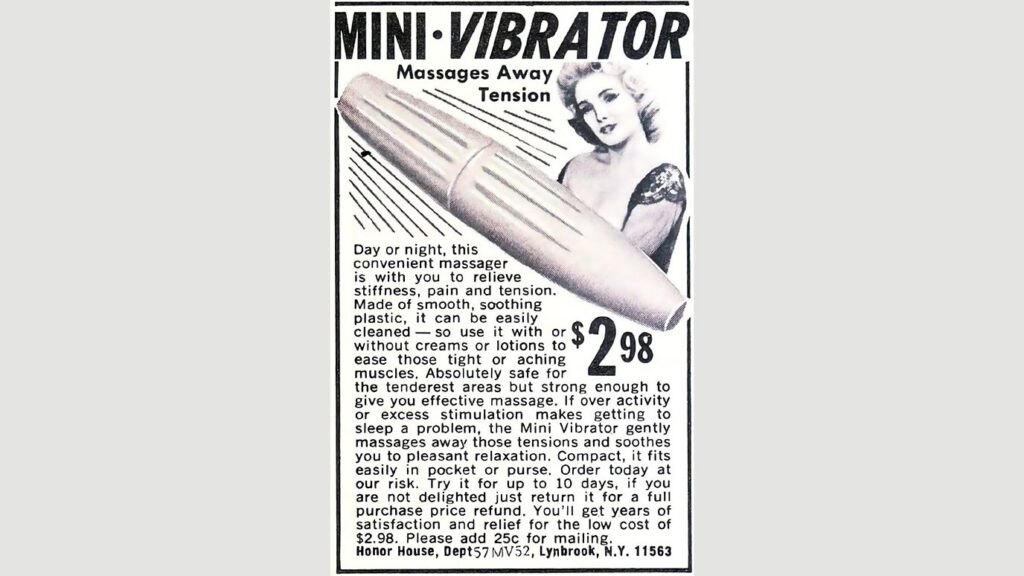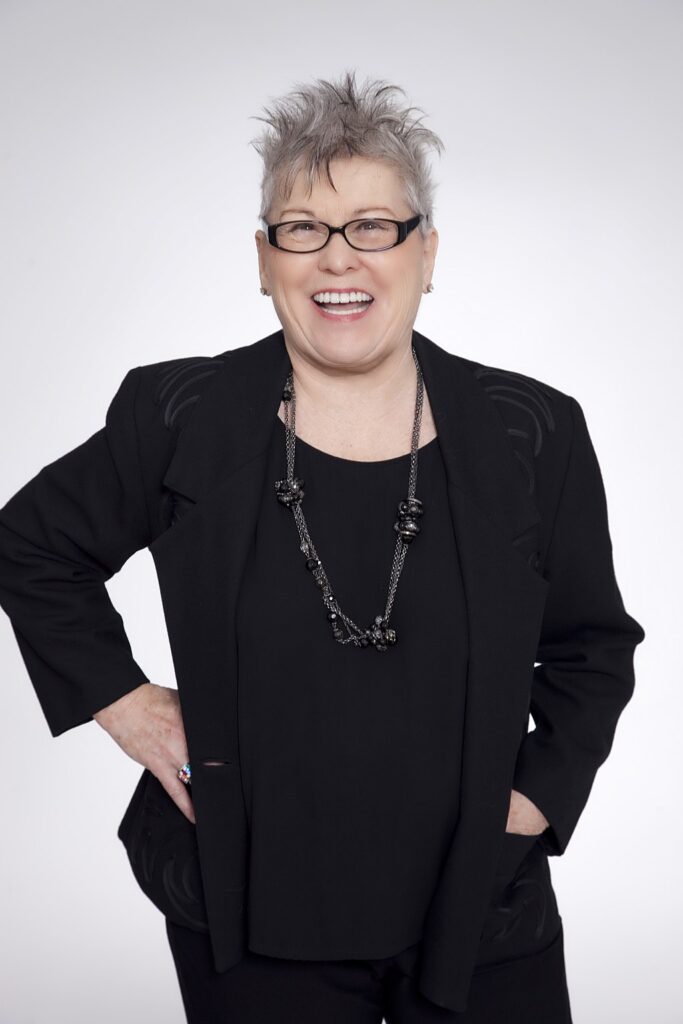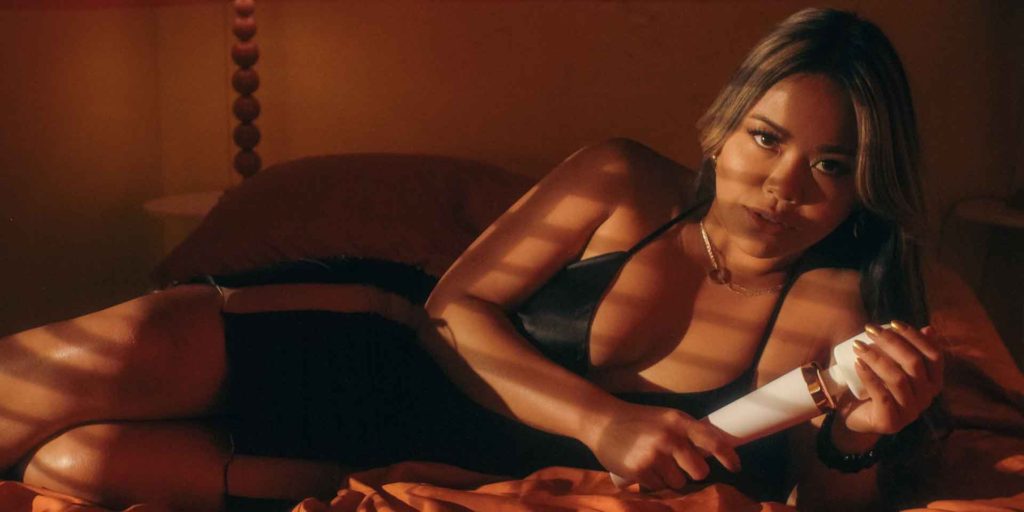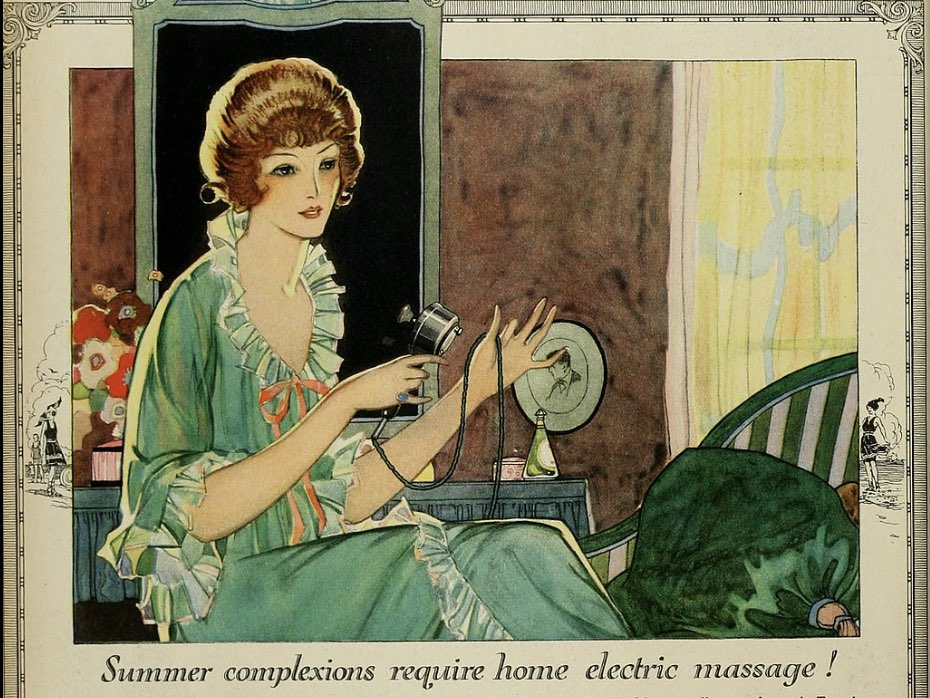Happy Women’s History Month! To celebrate, we’re so excited to share our own, SEXUAL women’s history month. Here at ForPlay Toys AND at our erotic films site ForPlay Films, we’re excited to use March to explore the history of women’s sexuality. Empowerment, pleasure, and geeking out over history – what’s not to love?
Today we’re excited to share some little-known (or celebrated) women’s history on something we all love here at ForPlay Toys – Vibrators!
What is the history of the vibrator? It’s so much more ancient and surprising than you might have guessed, and rife with legend and misinformation. But we’re here to debunk the myths, and give you some truth. Read on for more!
Of course! Let’s delve deeper into the nuanced history of vibrators:
Ancient Origins
There’s an urban legend that suggests that Cleopatra used captured buzzing bees in a box as a kind of “vibrator” held against her genitals. As tempting as the story is, we can’t find any proof of it dating further back than 1992. BUT it IS true that sex toys have ancient origins! Vibrators have roots in ancient civilizations where people experimented with various objects for sexual pleasure.
There are historical reports and primary sources that suggest that objects like carved stone, wooden phalluses, or even shaped camel dung coated in resin were used as sex toys and sex aids. And those reports range from Ancient Egypt and the Middle East, to the caves of Europe. There’s actually a 28,000 year old stone phallus that was found in a cave in Germany that seems like it might be the world’s first ever dildo! So don’t ever be ashamed of your sexual urges, or of masturbation – humans have been doing this for a long, looooong time.

19th Century Medical Use
Countless TV shows, movies, books and plays have explored the long-standing legend that male Victorian doctors created the first mechanical vibrators in order to treat female “hysteria”. The story goes that all manner of female anxiety, distress, and physical ailments were attributed to “hysteria”, and treated by manual manipulations of the genitals. If the female patient got flushed and had an orgasmic “hysterical paroxysm” (so the legend goes), then their hysteria was treated! According to the long-standing narrative, male doctors got so tired of using their hands (Ahem) that they invented huge machines to accomplish the same thing, more efficiently. Voilà! The first vibrators… or were they?
Unfortunately, as tempting and titillating as this legend is, it seems to be nothing more than a myth. Much-delayed peer review and scholarly study has found NO evidence of vibrators being used to bring women to orgasm, or to treat “hysteria”. The first reports of this myth come from a book called “Technology of Orgasm” by Rachel Maines. But none of the sources she cites actually includes any of the evidence she claims. Nevertheless, the story was so appealing to modern audiences that it has now taken hold in a very real way, and keeps being repeated by well-meaning journalists and artists. Misinformation becoming accepted as false fact.
Early Vibrator Inventions
So what’s the real story? In the 1860s, American physician George Taylor patented the “Manipulator,” a steam-powered massage and vibratory apparatus. It was HUGE, cumbersome, and coal-powered, so only the best spas and physicians could afford one. Later, Dr. Joseph Mortimer Granville invented the first electromechanical vibrator in the 1880s, called the “Percuteur.” The problem is – NEITHER of these machines were originally intended for female use. They were in fact created by men, mostly for other men – to treat muscle pains, or, in the case of Granville, to treat nerve issues like neuralgia. In fact, Granville outright refused to use his device to treat women, not wanting to be “hoodwinked by the vagaries of the hysterical state“. (Gosh, Granville, tell us how you really feel!)
So another urban legend bites the dust. But, let’s be real – how many of us could actually climax from the percussive, almost-violent sensation that these machines offered? No thank you! Maybe we can feel relief that our fellow historical sisters were mostly spared.

Transition to Home Use
By the turn of the 20th century, smaller, more portable vibrators were developed, powered by electricity. These devices were used by physicians in clinical settings but were gradually marketed for home use as well. But they, again, were NOT initially marketed as sex aids at all. In fact, they were sold as “cure-alls”, good for women, men, and even children, to vibrate away pain and encourage good health and beauty. Catalogues as respectable as Sears Roebuck and even the New York Tribune ran ads for these friendly, family-appropriate, household devices next to ads for other small household electronics.

Slow Cultural Shifts
Between the 1920s and 1950s, vibrators were widely available through mail-order catalogs and women’s magazines, albeit discreetly. However, societal attitudes towards sexuality remained pretty darn conservative, and open discussions about sexual pleasure were rare. Vibrators were still primarily associated with medical treatments rather than sexual gratification. Most companies selling vibrators did sell phallic attachments for use in and around the genitals or anus, but it was strictly medical. Think, for the treatment of hemorrhoids, vaginitis, impotence, or rectal disease… NOT orgasm or self-gratification.
Of course, we can’t know what individuals got up to, recreationally, in the privacy of their own homes. And there were direct-to-consumer ads that hinted at sensuality. Of course, in most of the US and UK, obscenity laws prevented anything more overt. So we can say that society as a whole certainly didn’t see these vibrators as sexual. Except, of course, when these devices were sometimes used specifically to treat diseases of sexuality… said to be brought about by masturbation. Ah, the irony!

Sexual Revolution and Feminism
Thankfully, the sexual revolution of the 1960s and 1970s brought about significant changes in attitudes towards sexuality. The advent of birth control brought a revolution. Birth control meant that more people could explore sexuality as a way to experience pleasure and intimacy, and not worry as much about pregnancy. And that new attitude carried over into masturbation, too.
Betty Dodson and her body workshops helped destigmatize female masturbation. She converted female masturbation from an act of sin and shame to one of self-love and celebration. Dodson was one of the first people to openly use vibrators as a sexual aid, recommending the now-iconic Hitachi Magic Wand (see our versions here!) for its potency. Go Betty, go!
With the rise of feminism, women began openly discussing and exploring their sexual desires. Vibrators began to be seen as empowering tools for self-pleasure rather than medical treatments imposed by male doctors. Vibrators even became political ! They became a way for desexualized women, especially housewives, to take back power over their own bodies. Through vibrators, women suddenly become multi-orgasmic, and were able to shatter the patriarchy… at least in their own minds and households.

Mainstream Acceptance
In the late 20th century to the present day, vibrators have become mainstream, openly marketed as sexual aids and pleasure devices. They’ve emerged from the shadows of seedy sex shops and buttoned-up medical offices, to be widely featured in tv, film, and in pop culture. The Rabbit Vibrator became a veritable household name after Sex and the City featured “that” episode in the 90s. Obscenity laws be gone – let’s talk about sex (and vibrators) baby!

Present Day
Taboos be gone – vibrators have become celebrated! Sex tech has exploded in popularity, offering as a smorgasbord of vibrating pleasure. We even have new modalities of sensation that our forebears could have only dreamed off. Pulsing, suction vibes, rolling beads, tongues that mimic licking, even self-heating vibrators… the sexual sky is the limit. And then we have the multitude of vibrator designs! Magic Wands, rabbits, bullets, dual sensation, discreet lipsticks, beautiful roses, and more. Not to mention high-tech, app-controlled models that take the sting out of long-distance relationships. Vibrators aren’t just for women either – think couples vibrators, vibrating cock rings, or toys for prostrate stimulation. And we also love queer-friendly designs, and experimentation. Good vibrations are for every one, and for every body. Vibrators are just part of a new, holistic attitude to sexual health and pleasure, that brings mind, emotions, and body together.
The internet has played a significant role in destigmatizing vibrators by providing access to information, resources, and discreet purchasing options. And here at ForPlay, we’re proud to be part of this holistic, sexual-wellness, inclusive new wave. Thanks to the women who came (and came again) before us, YOU can now freely choose your vibrator, without shame and stigma. So check out our feminist erotic films featuring vibrators (NSFW!). And consider purchasing a new vibrator for our toy store today. What better way is there to celebrate Women’s History Month?

